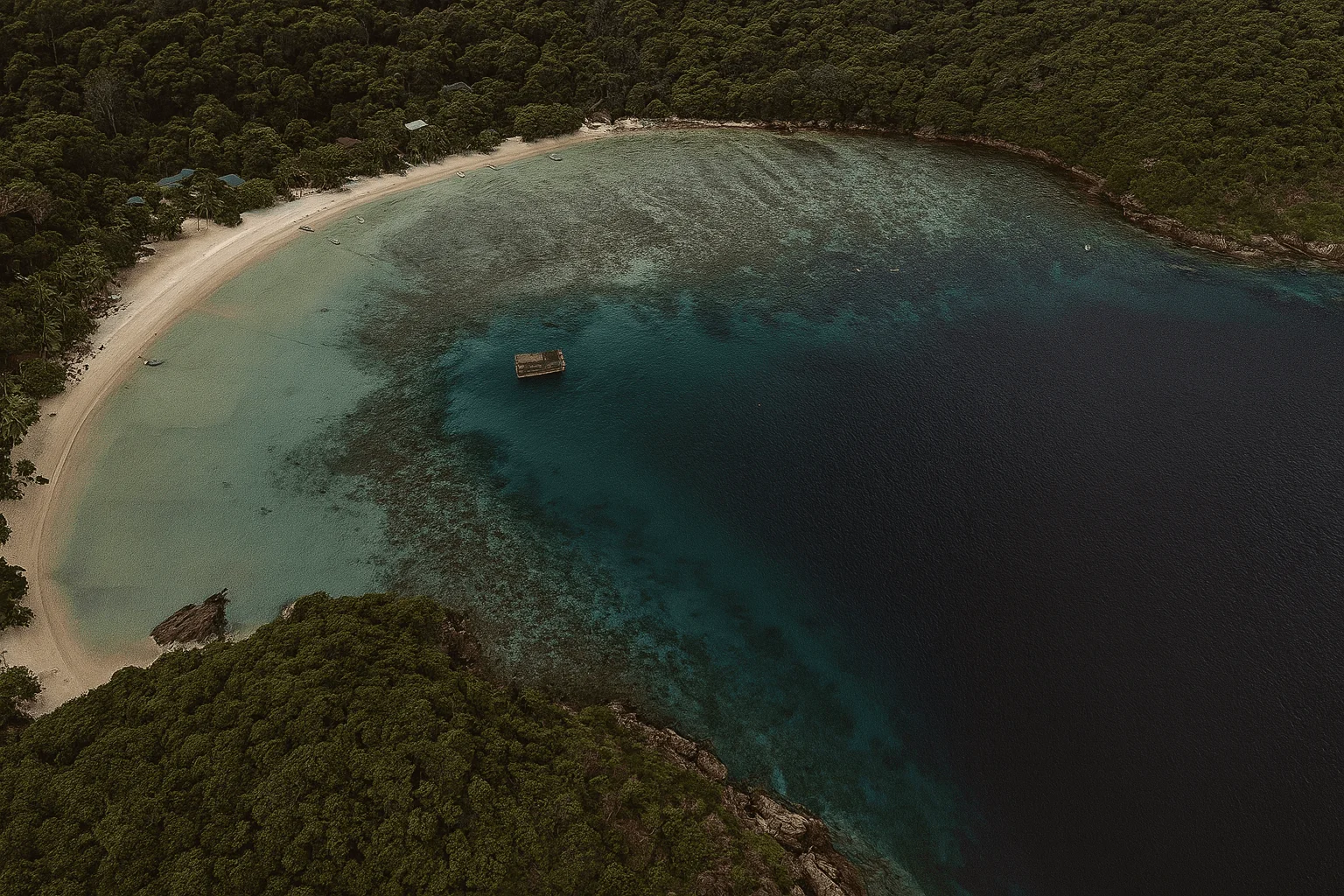Scuba Diving in Tenggol
The Ultimate Guide
Pulau Tenggol is a small, rugged island off the east coast of Peninsular Malaysia in the South China Sea. Part of the Terengganu Marine Park, it offers uncrowded diving on steep coral‑covered slopes, rocky pinnacles and underwater boulders. Its remote location and limited accommodation give the reefs a pristine feel: forests of hard and soft corals harbour schools of jacks, trevallies and barracudas, while turtles, bumphead parrotfish and the occasional whale shark cruise past. Currents can be brisk, creating exhilarating drifts, and there are also calmer sites for photography and training. Although it sees far fewer visitors than nearby Perhentian or Redang, Tenggol rewards adventurous divers with dramatic seascapes and big‑fish encounters.
Difficulty
Moderate
Temperature
27-31°C
Visibility
10-20m

Diving Highlights
Best Months to Dive
Getting to Tenggol for Diving
✈️Transportation
To reach Tenggol you first travel to the east coast state of Terengganu.
Fly to Kuala Terengganu’s Sultan Mahmud Airport or Kuantan Airport from Kuala Lumpur, then take a taxi or bus to the fishing town of Kuala Dungun (about 1½ hours).
From the Dungun jetty it’s a 40‑minute speedboat ride to Pulau Tenggol.
Overland travellers can also take buses from Kuala Lumpur directly to Dungun and catch the boat.
There is no ferry service during the monsoon season when resorts close.
Country
Malaysia
Currency
Malaysian Ringgit
Electricity
240V, 50Hz, UK plug
Cost of a Dive Trip in Tenggol
Day Trip
Dive Resort
Meal
Accommodation
Best Dive Sites in Tenggol
🐠Tokong Timur
Tenggol’s most famous site is a rocky pinnacle jutting up from deep water on the south side of the island. Sloping reefs drop from 5 m down to 30 m where whale sharks occasionally cruise, especially from August to October. Schools of jacks, barracudas and batfish gather around the boulder, and colourful soft corals and sea fans cover the walls. Currents can be strong and form exciting down‑currents along the west face.
🐢Coral Garden
A gently sloping reef on the north‑west side of the island that lives up to its name. Hard corals, soft corals and anemone beds attract a wide variety of reef fish including angelfish, butterflyfish and anthias. Turtles often graze on the reef and macro lovers will enjoy searching for nudibranchs and shrimps. Suitable for all experience levels.
🦈Tokong Talang
This small rocky islet off the east coast features giant boulders and channels festooned with gorgonians and whips. Look for schools of fusiliers, trevallies and the occasional eagle ray. The site is exposed and can have surging waves and currents, so it’s best dived on calm days.
🐙Tokong Burung
Named after the seabirds that nest here, this outlying rock boasts steep walls covered in colourful sponges and soft corals. Turtles nap on ledges, and schools of yellowtail barracuda and snapper sweep past in the blue. In spring and autumn migratory pelagics including trevallies and mackerel visit.
🐚Rajawali Reef & Wreck
A double attraction: a sloping reef rich in stag‑horn corals and a small wooden fishing boat sunk intentionally at around 20 m. Schools of batfish and snapper gather on the wreck, while cuttlefish, ornate ghost pipefish and nudibranchs lurk on the reef. A great site for combining wide‑angle and macro photography.
What Divers Say About Diving in Tenggol
Yuki Tanaka
Underwater Photographer / Master Scuba DiverDiving Tenggol is all about wild, uncrowded reefs and the thrill of the unexpected. Your first descent might be down the rocky pinnacle of Tokong Timur where a whale shark could cruise by or a school of chevron barracuda might circle overhead. The slopes are smothered in leather corals, gorgonians and barrel sponges, with clouds of fusiliers and anthias flashing past in the clear water. Currents can pick up quickly, which makes drifts both exhilarating and challenging—definitely bring a surface marker buoy. After a surface interval on the boat, you might drop onto Coral Garden for a calmer dive among teeming reefs of soft corals and macro critters. At night the island is peaceful; the lack of crowds and the Milky Way above remind you just how remote you are.
Frequently Asked Questions About Diving in Tenggol
When is the best time to dive Tenggol?
The island’s dive season runs from March to October, with the driest conditions and best visibility occurring during this period. The monsoon from November to February brings rough seas and most resorts close.
What marine life can I expect?
Tenggol is known for reef sharks, turtles, bumphead parrotfish, schooling barracudas and jacks, and macro critters such as nudibranchs and crustaceans. Whale sharks often appear between August and October when plankton blooms.
Are the dives difficult?
Many sites are drift dives with moderate to strong currents and depths around 25–30 m, so an advanced certification and experience with currents are recommended. There are also calmer sites for beginners and photographers.
How many dive sites are there?
The island group has around 20 named sites including pinnacles, sloping reefs, walls and a small wreck.
What are the water temperatures and visibility like?
Water temperatures range from 27–31 °C and visibility is usually 10–20 m, improving to 15–20 m in calm weather.
Is Tenggol suitable for snorkelers or non‑divers?
Yes. Shallow reefs with calm water can be snorkelled from boat or beach, and the island’s jungle interior has short hiking trails.